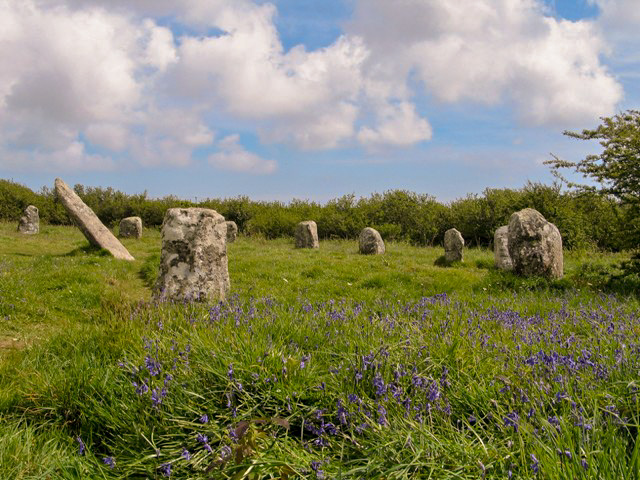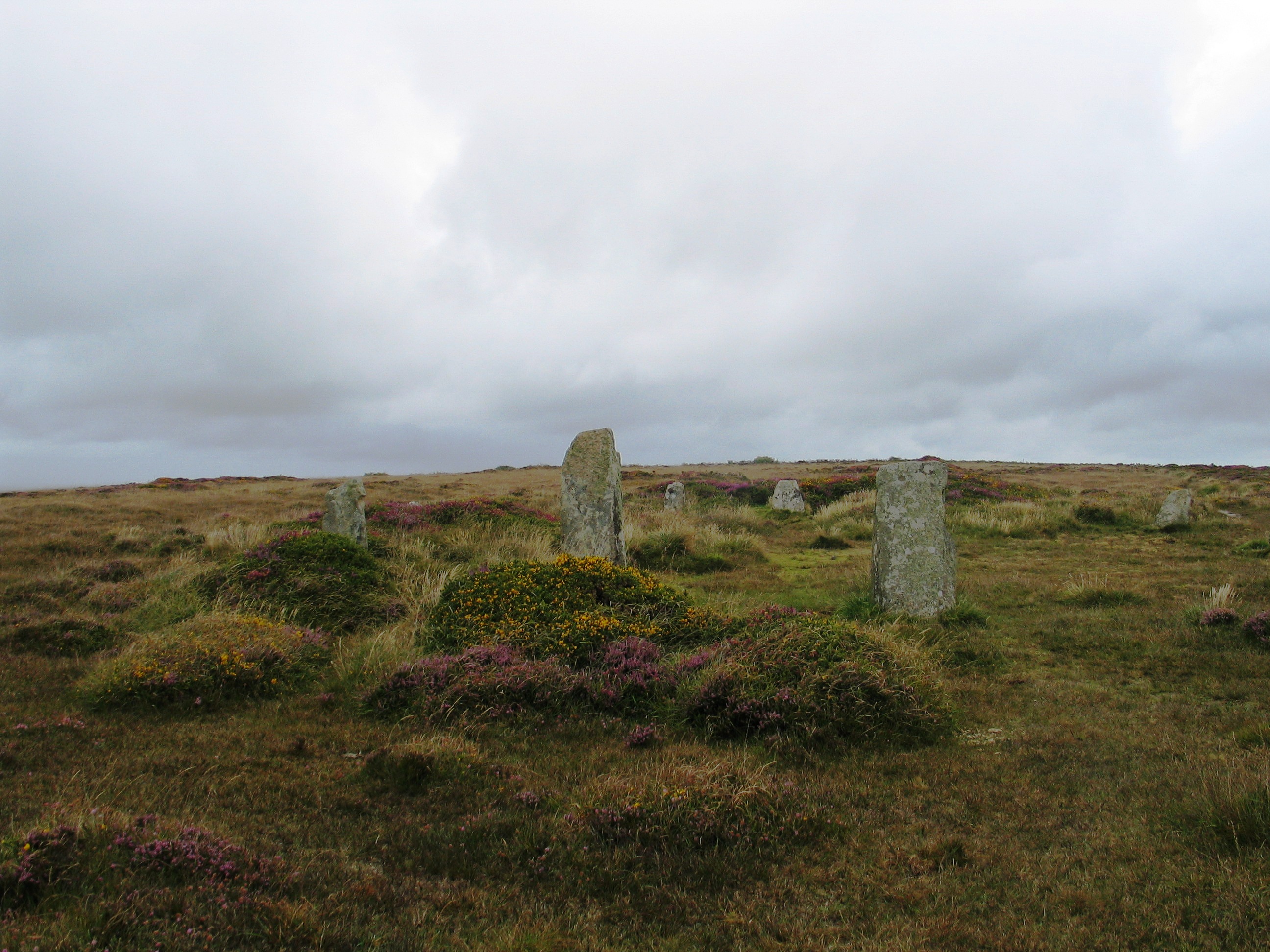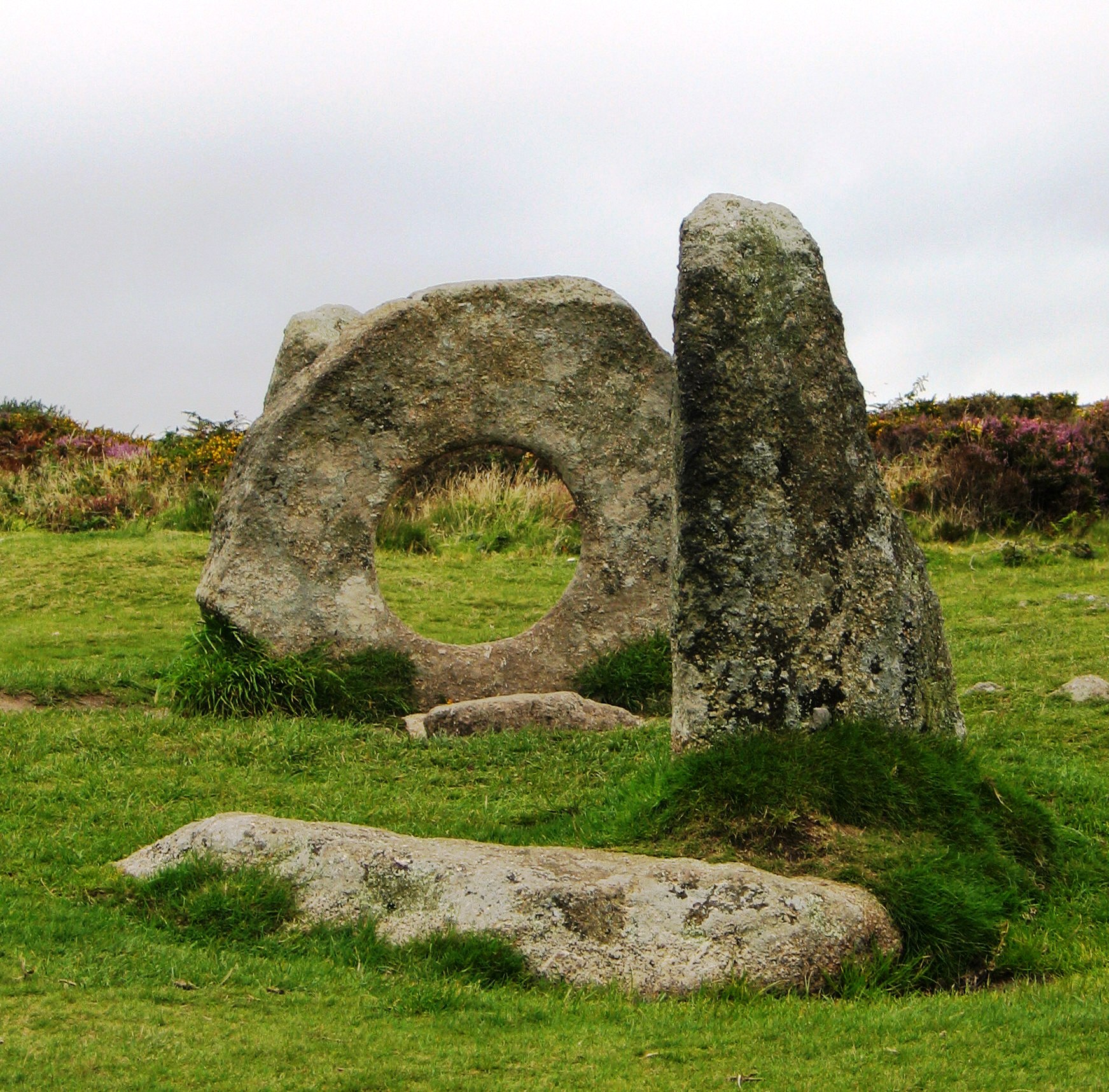Cornwall wears her history lightly and it sometimes feels that the past is still a whisper away. To visit the high places on the Penwith moors untouched by agriculture, as part of your holiday, will be to touch history. There are sites in Cornwall that represent every period of history and Cornwall has more nationally designated monuments (Scheduled Monuments) than any other county in England. Today they still sit silently waiting, just as though the ancient peoples had suddenly walked away and they are waiting for them to return.

The ancient sites of west Cornwall are easily accessible with the aid of a good map and public footpaths while others are closer to the road. Here are a few suggestions but please remember that these few will only scratch the surface of the rich history there is to see here.
Stone circles

There are a rich collection of stone circles here in West Cornwall, probably erected in the late Neolithic or early Bronze Age as part of the spiritual life of the ancient peoples. Today they have names such as Merry Maidens, Nine Maidens, Boscawen-un and they were part of a rich sacred landscape accompanied by Menhirs and Holed stones set in beautiful spare countryside.




Tregeseal East Stone Circle
Tregeseal also know as The Dancing Stones is the lone surviving circle of a group of three on an East west alignment. This circle now has nineteen stones (although early records refer to twenty one stones) arranged around a circle of 21 metres in diameter below Cairn Kenidjack about a mile from St Just.

A walk to the Nine Maidens from Men-an-Tol



The day that we visited we walked on and ate our picnic lunch under the shelter of Ding Dong mine, tucked in the shelter of the spoil heaps looking down at the glorious vista of Mounts Bay below.




Healing stones
Men-an-Tol
Men-an-Tol is a wonderfully preserved example of an ancient healing stone probably dating from the Bronze Age. Each settlement would have had its own stone circle and associated holed stone and this one is in an atmospheric position on the edge of the moors.
Traditional rituals were thought to have been for babies and young children to be passed through them before being “drawn on the grass three times against the sun” Adults were expected to pass through the hole nine times if asking for healing or fertility and it is thought that certain times of the year were the most beneficial.




Once we had an American lady staying who suffered from ME and she went to the healing stone to perform the ritual. As her husband pulled her through for the last time (and it must be admitted it would have been a tight fit!) they became aware of a man watching them “Well” he said you’ve asked the stone for something now you must leave a gift” They had to admit they had nothing so he produced a piece of quartz from his pocket for them to leave as an offering. He explained he was planning to return to the stone that day as he had finished his painting but something had drawn him back that day. Serendipity? Well perhaps and the Lady? Well she came back on holiday the next year and she was much better!

Where to find Men-an-Tol
Take the Madron to Morvah road and park opposite to the Men-an-Tol Studio (Grid ref: 418346) before taking the farm lane opposite the studio. Walk up the farm track (this is a public footpath only) for about ten minutes until you pass a group of derelict farm buildings. Watch for a granite style on the right hand side of the track and you should quickly find the stone. If you would like to continue the walk across the moors you will find the stone circle of Nine Maidens just after passing a Bronze Age barrow. This walk will take you along what was a prehistoric Ridgeway.
Dolmen or burial chambers
The Dolman or single chambered megalithic tomb, can be found throughout West Penwith. Most date from the Neolithic period, (4000 – 3000 BCE) and originally they would have been covered with earth or stones to form a barrow. Lanyon Quoit is one of the most well known and easily accessible ones in West Penwith. It is easily found just North West of Penzance on the Madron to Morvah road.
Lanyon Quoit
Donated to the National Trust by the Bolitho family the stones are now exposed to the elements with the remains of a barely discernible long barrow near The Quoit originally stood on four stones high enough for a man and horse to pass underneath but fell in a savage storm on the 19th of October 1815. It was re-erected in 1824, as a result of local fundraising, under the directorship of Captain giddy of the Royal Navy. It now stands much lower, on the three stones that survived intact, at right angles to its original position. It is, never the less, still and impressive structure with the capstone alone weighing over 12 tonnes and 5.5 metres long.

Ballowall barrow
With a spectacular cliff top location and views to Land’s End and Cape Cornwall this must have been an impressive position when in regular use in the late Neolithic or early Bronze age. It was discovered under mining waste by the famous historian William Borlase and excavated to reveal a central domed structure containing cysts and a pit beneath with a surrounding cairn again containing cysts. More info from the Cornwall Guide






Courtyard villages
There are several ancient courtyard villages in West penwith notably Chysauster set high above sea level and Carn Euny a fine example tracing back to the Bronze Age with an underground beehive hut and accessible Fogou that I have written a separate blog about after our recent visit. (Link above)
Holy or sacred Wells

The ancient belief in the healing power of sacred springs has been handed down through the ages from early man. The wells are still here although repeated attempts to ban the use of the waters were made.until they were declared Holy wells and reused for Christian healing and baptisms often with a tiny chapel built beside them. In West Corwnall there are fine examples at Madron and Sancreed
Suggested blogs from this series
If you would like to take a look at some more of the ancient places of West Cornwall try my next blog about my September visits to Men-an-Tol. Tregeseal and Nine Maidens and later in the autumn we visited Boscawen-un Stone Circle on a glorious autumn day.



Discover more from Ednovean Farm
Subscribe to get the latest posts sent to your email.
